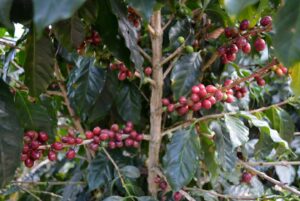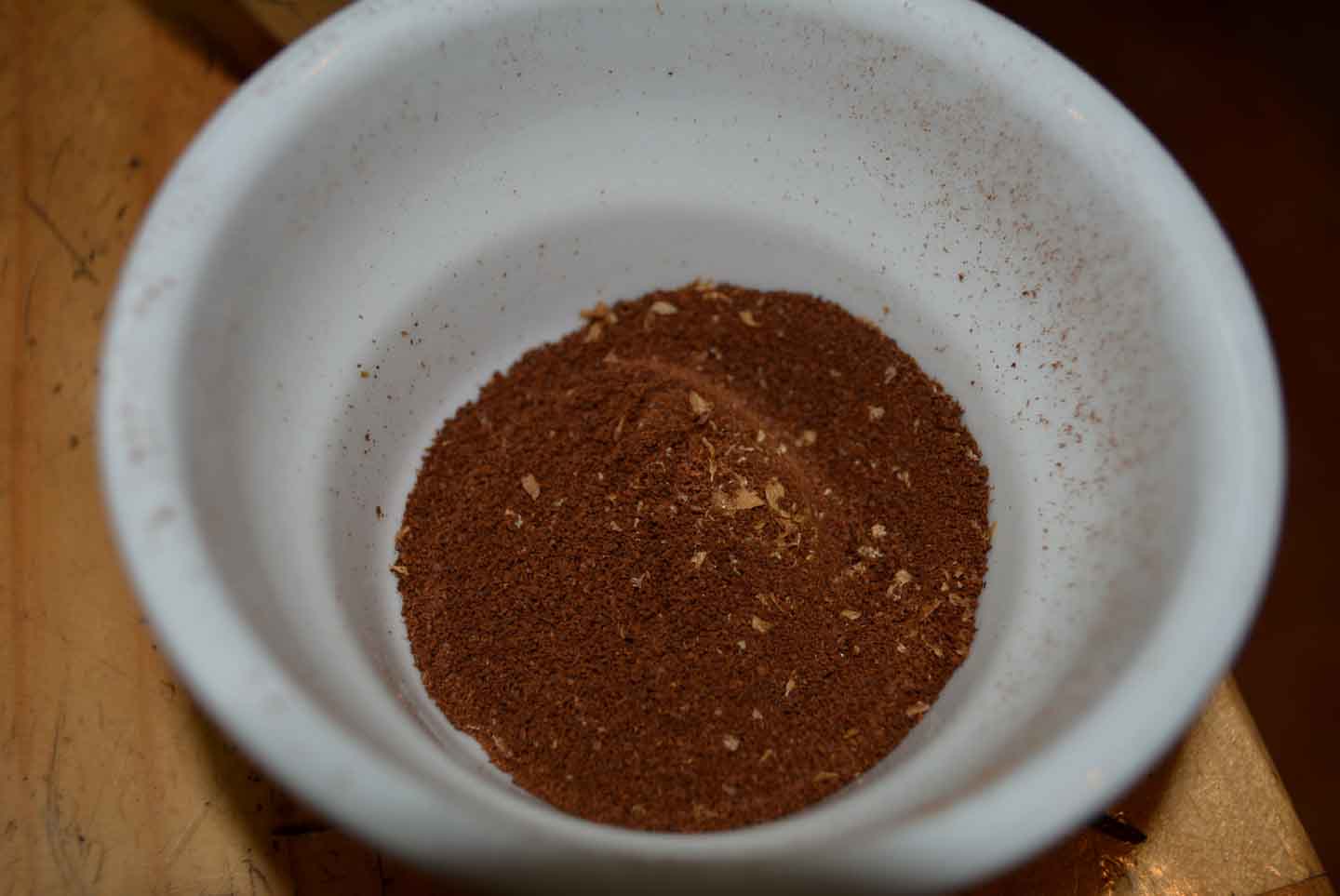Coffee is just coffee, right? For many habitual coffee drinkers, the answer might be “yes.” For those who have discovered the joys of specialty coffee though, there’s nothing like a perfectly roasted, freshly ground, and well prepared cup of high grade java.
If you desire not only high quality coffee, but also want to foster a system that enables family farmers to succeed and prosper in a more economically sound and sustainable fashion, then you want to support direct market (direct trade) coffees.
Here’s three reasons why you should support your “local” coffee farmer…
Three Reasons to Drink Direct Market Coffee
1) You’re buying “local” – Just as when you support your local farmers market, and patronize local shops instead of the behemoth companies, by purchasing direct market products (coffee is just one,) you are helping the “little guy,” in this case a real coffee farmer. Sure, they aren’t next door, or even in the same state, but these hardworking families are just as much the backbone of specialty coffee as your local grower is to fresh fruits and vegetables at home.

2) Taste and Quality – Direct market coffees are just that, the coffee was purchased direct from the grower. That (hopefully) means a personal relationship, built on trust and dialog. A dialog that emphasizes quality, but is also there for conversations between coffee buyer and farmer to share knowledge and improve with every year.
Taste and quality result from better attention to every detail from early care of plants, harvest, and on to fermentation & proper drying. A farmer that earns more for his crop can provide a consistent level of care that a farmer in the general coffee marketplace can’t afford in a low price year (as is the case currently.) Coffee plantations that are consistently well tended are more disease resistant, productive, and prone to produce more flavorful coffee beans. Because quality is rewarded, the growers are motivated to produce exceptional coffee.
3) Sustainability – The hard reality of coffee growing is that for most it is a life of poverty. Today’s youth are fleeing the farms, and if we are to have high grade specialty coffee in the future, it is imperative that we strive to maintain it’s economic viability now.
As I wrote this post, I struggled with the idea of “direct market.” The term is too general. While any purchase from a farmer could be considered “direct,” I believe that the real intent in the “field to cup” movement is to foster a system of mutual support and transparency, building a secure coffee chain with as efficient a connection as possible, which may not necessarily mean that there was only one person (or none) between farmer and roaster, but rather that an ethical price was paid, and that there is a commitment by each party to mutually support each other as much as possible. It sounds simple, but the reality can be quite complex.
The traditional “middleman” method often takes advantage of the farmers at a time (early harvest) in which they are in most need financially. That said though, the need is great for someone to do the direct coffee buying (vs the typical roaster.)
Fortunately, there are now more buyers and coffee brokers that are conscious of the needs of the farmers, and are working hard to strengthen the relationship from field to cup by paying better prices and eliminating unnecessary costs that the historic model has layered onto the market. Consumers also seem to be on board with direct market coffee.
The Need to Self Police Direct Trade

As we’ve seen in the various certification programs (i.e. Organic, Fair Trade etc.) the cost is quite often enormous for the typical family grower. So, the temptation to have a “Direct Market” or “Direct Trade” certification is high. but once again would be costly & might not necessarily benefit the small estate farmer.
Meanwhile, when buying from a direct market importer one should question the background of the coffee, try to ascertain what things the importer is doing behind the scenes, and look for as close a relationship to the fields as possible. For the adventurous, it may be time for that point of origin trip that you’ve been thinking about…
At the least, you can better inform your customers about the coffee that you’re serving, or as a consumer you will know more about your favorite beverage and the people behind the scenes.
What Can One Do to Support Direct Market Coffee?
For the consumer, be informed. Ask about your coffee. Not only will you enjoy a delicious cup, but you’ll know that in a small way you are helping someone better their lives. (Yes, really!) Seek out your local coffee shop/roasters that also support direct relationships. Buy local.
For the roaster, or coffee shop owner, learn more about the coffee that you buy. Take a point of origin trip, be mindful of your sources, and enjoy the flavorful results!
Links of Interest
Here are some excerpts that may be useful:
5 Things You Need To Know About Your Daily Cup Of Coffee – Forbes
The coffee supply chain is completely broken. Because coffee is a perishable item, ideally it would come directly from the farm to your doorstep, with as few intermediaries as possible. However, the current coffee supply chain is antiquated and inefficient, with up to 20 middlemen and six months between the farmer and you.
Many coffee farmers have little market access, forcing them to rely on middlemen to bring their green, unroasted coffee to the market. With so many intermediaries, the typical coffee supply chain excludes farmers from the most profitable activities and is in dire need of optimization. Middlemen, and especially roasters, capture nearly all of the profit after the crop leaves the farm. It’s a stunningly disproportionate reward compared to the amount of time, labor, and know-how farmers put into their product.
Coffee Industry Wakes up to Twists in Direct-Trade Route WSJ
Article discusses the problem of when a lot of coffee is bad. In a long term relationship with a grower, how to handle problems is vital.
The Direct Effect – Imbibe Magazine
“Direct trade was conceived as a way that would allow us to build a reliable supply chain of coffee, where quality was always going to be the major goal,” Watts says. “We could grow together with farmers who we’d chosen to work with, in a way where we were both essentially sharing the risk that’s inherent in trading coffee, and in agriculture in general.”
Coffee and the Market: Specialty Coffee vs. Commodity Trading
Let’s talk a little about why we pay more for specialty coffee. There are a number of reasons, all of them important.
Producers deserve to make a profit on their product. This is a basic tenet of the whole Fair Trade movement. It’s the Fair part of it. On the commodities market, it’s not unusual for farmers to barely clear enough for their crops to pay their workers and maintain their crops.
It promotes sustainability. When coffee prices plunge, farmers often abandon their enterprise. Some go so far as to uproot or burn down their coffee trees in order to plant a more profitable crop. When they get a fair price for their coffee, they can afford to keep producing coffee. (editors note: if we don’t do this, we may only have commodity coffee within a generation)
The coffee is distinctive. Commodity coffee is generally gathered up in large batches from multiple farms and regions and mixed together in huge lots. The end result is coffee that is only as good as the lowest quality coffee in the bunch. When coffee roasters or importers buy from individual farms, they can pick and choose among what’s available. As a bonus, you know exactly where your coffee came from.
The coffee is better. When better coffee brings higher prices, coffee producers are encouraged to invest time, knowledge and money in producing the best coffee crop possible.
—
We go to the farm, so that you don’t have to. Thanks for supporting direct market coffee!
© 2015 Ben Gangloff
You might also enjoy:
Real People, Really Good Coffee, Update August 2015 (with our 2015 Offerings)
Coffee Processing: From Farm to Ship, See it happen!
Curibamba Coffee Workshops June 2015
Peru Bans GMO Food for 10 Years
5 Must See Natural Areas in Peru for 2015
Did you enjoy this page? Have questions? Would like information on something to be posted here? Please drop us a line, or sign up for our email list in the box to the right.

